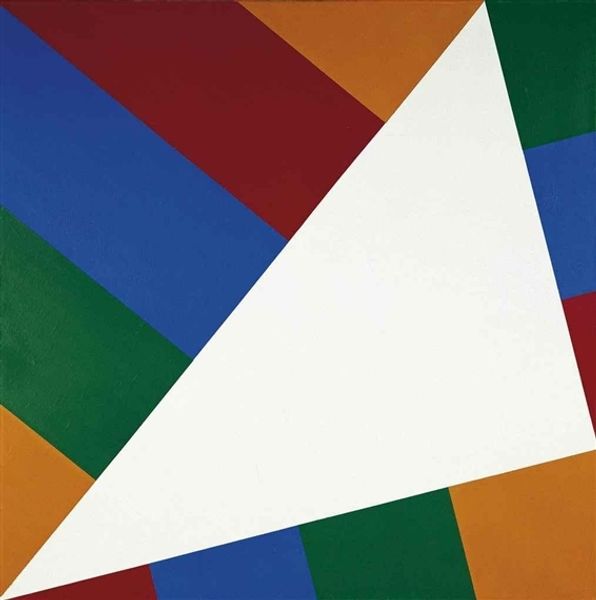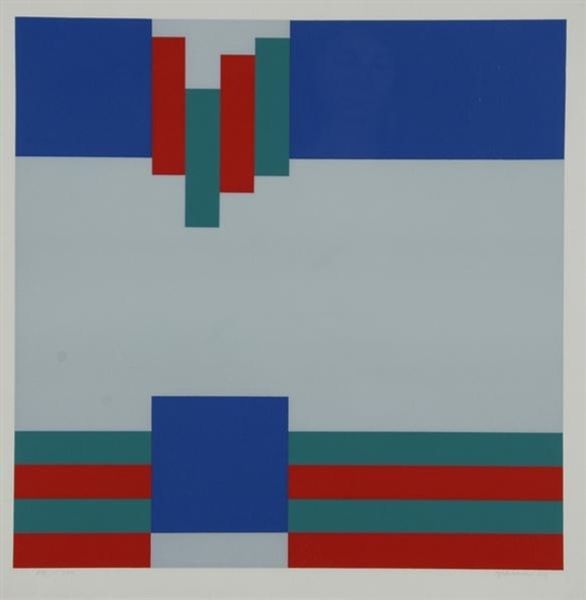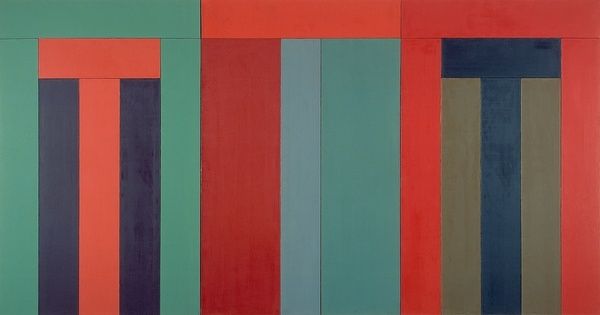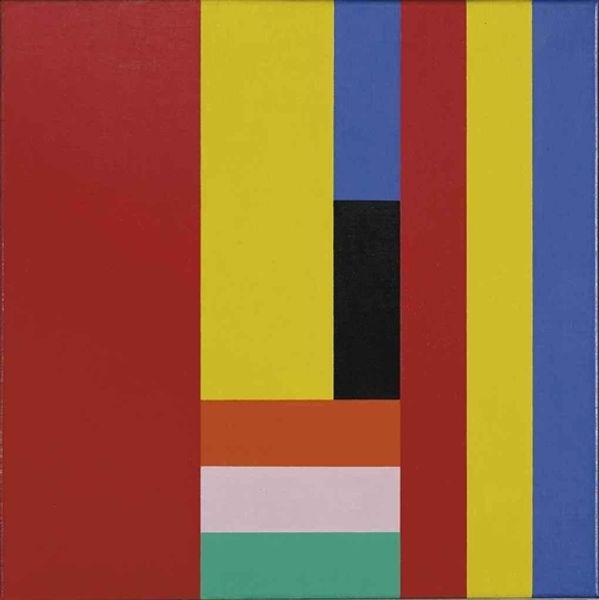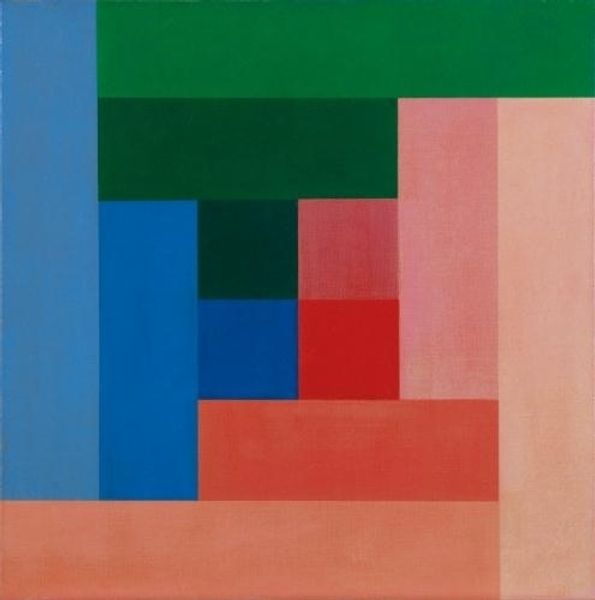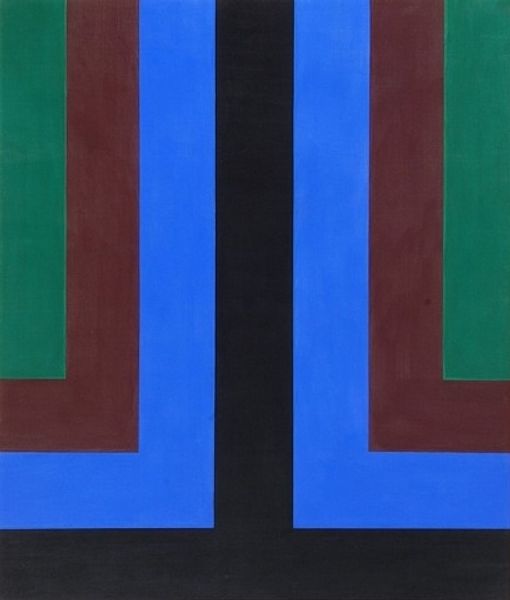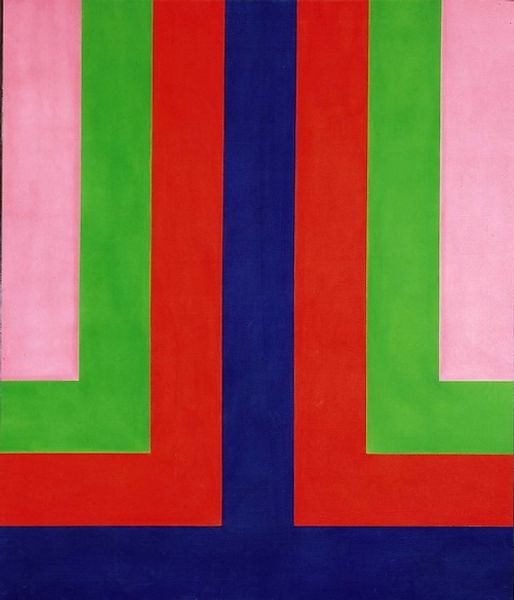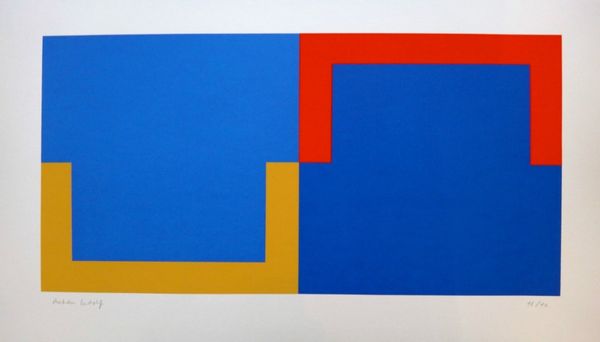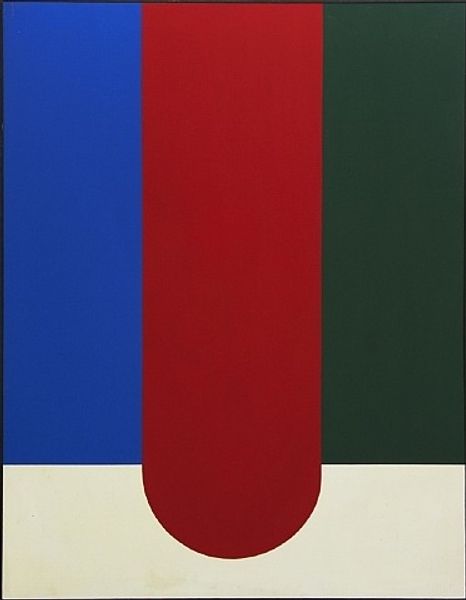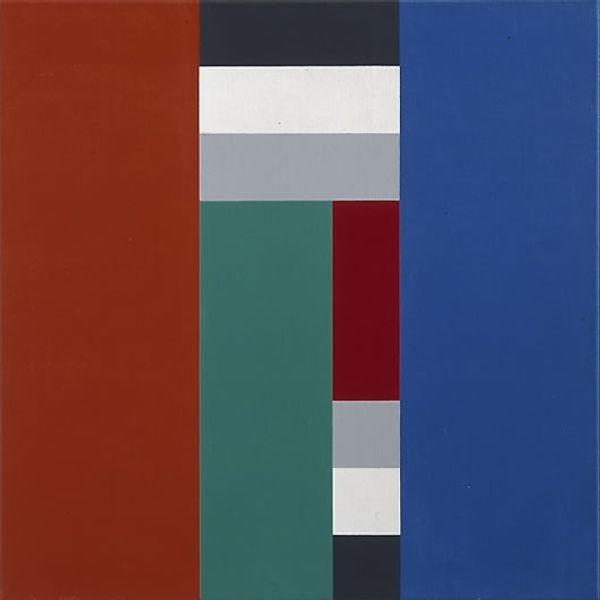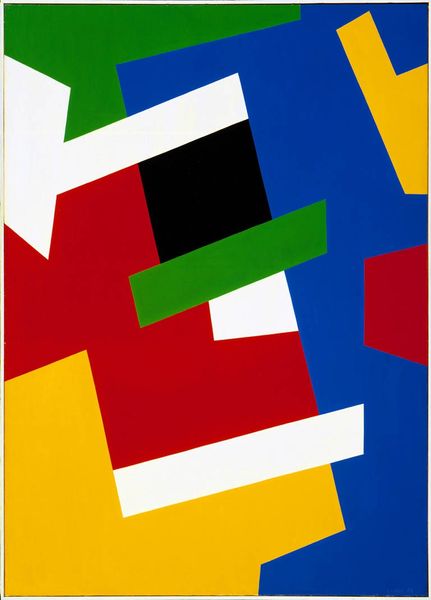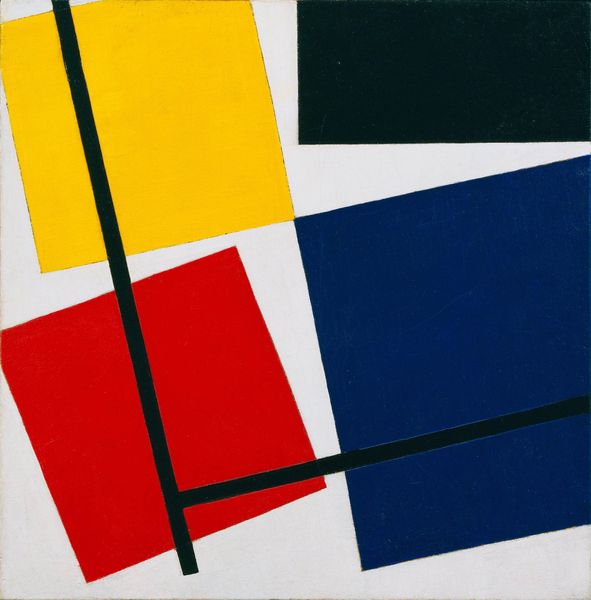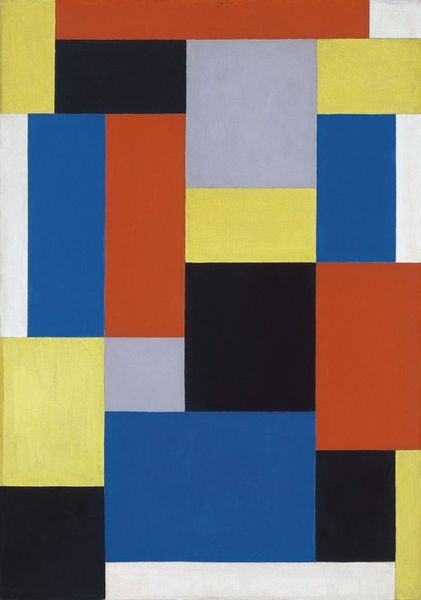
Copyright: Verena Loewensberg,Fair Use
Editor: Here we have an untitled acrylic painting by Verena Loewensberg from 1981. It features bold geometric shapes, primary colors intersected by a large white parallelogram. The balance and simplicity are striking... What do you see in this piece, and how does it fit into the larger art historical context? Curator: Well, looking at Loewensberg’s “Untitled”, one is immediately reminded of the concrete art movement, particularly its engagement with geometric abstraction as a form of universal visual language. The hard-edged forms and pure colors reflect a utopian impulse – a desire to create a rational, harmonious world through art. Consider how this aesthetic emerged in the wake of profound social and political upheaval; does this strive for order resonate in our contemporary context? Editor: That's interesting. It seems so... calculated, I guess. Almost detached from emotion, which, thinking about it, is a very particular choice. But was it actually universally accessible? Or did its appeal primarily stay within a specific intellectual and social class? Curator: Exactly. The question of accessibility is crucial. While concrete art aimed to be universally understood, its reception was often shaped by existing cultural capital and education. Who had the privilege and the language to truly engage with this seemingly ‘pure’ form of abstraction? How do power dynamics and access to cultural institutions affect art interpretation? Editor: So even in its simplicity, it still sparked discourse of accessibility and inequality within the art world? Curator: Absolutely. The beauty of a piece like this lies not just in the aesthetic experience, but in the layers of meaning and the social questions it provokes. The apparent neutrality is not neutral at all. It is important to constantly question these aesthetic choices and understand what historical and social messages that they are imbedded within. Editor: I see it completely differently now! Thanks, this really broadened my perspective on Concrete Art. Curator: It's about continually digging beneath the surface, isn't it? It really is a testament to the power of art and its profound influence on historical understanding and the importance of engaging in conversations with diverse points of view.
Comments
No comments
Be the first to comment and join the conversation on the ultimate creative platform.
